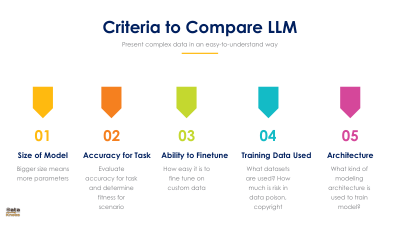How to Compare LLMs & Select | Slide

Criteria for Comparing Different Large Language ModelsWhen evaluating and comparing different large language models, several key factors need to be taken into consideration. These factors play a crucial role in determining the performance and suitability of a language model for specific tasks. Below is a breakdown of the criteria used to compare large language models:
|
||||||||||||||